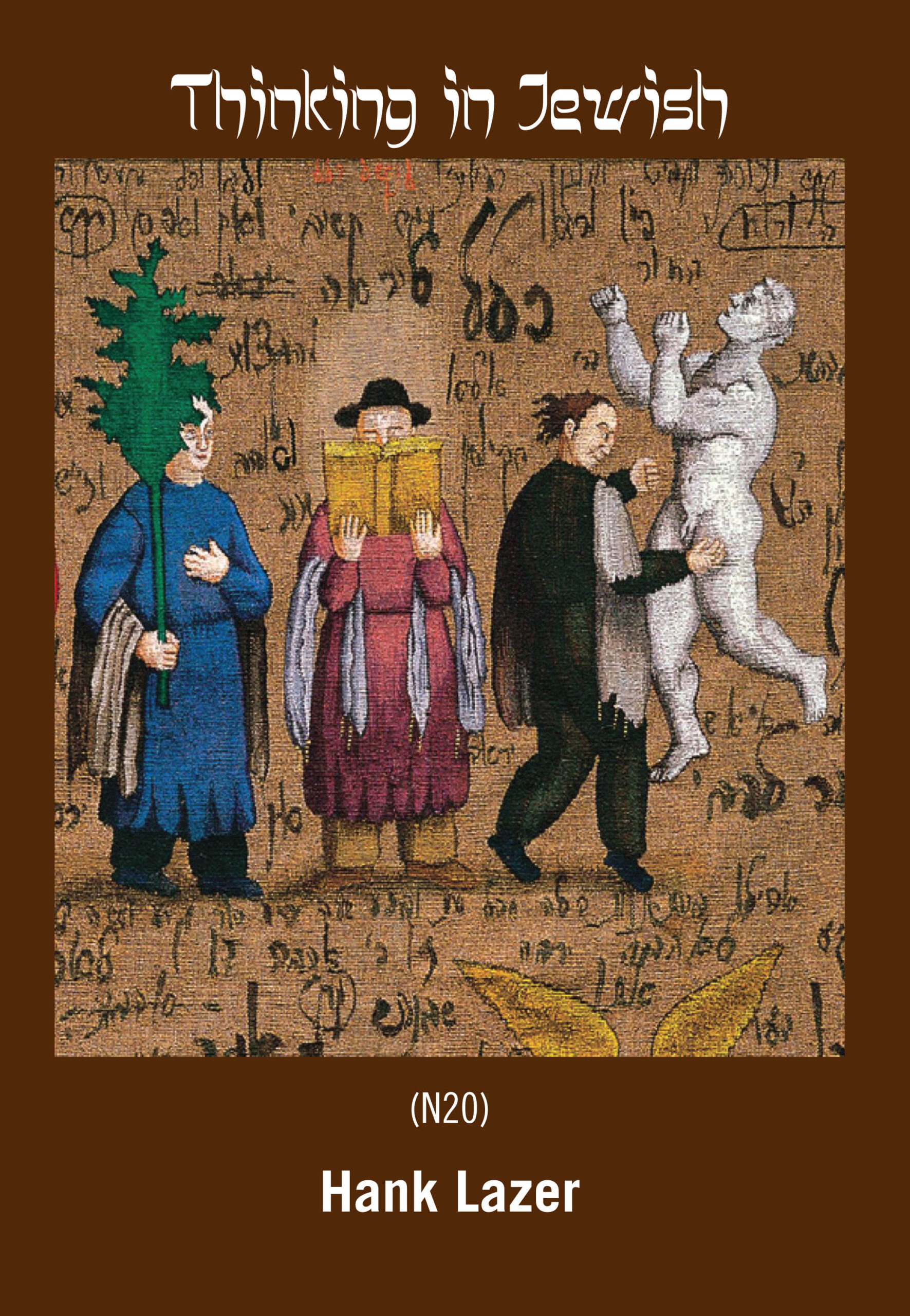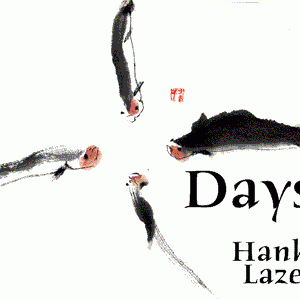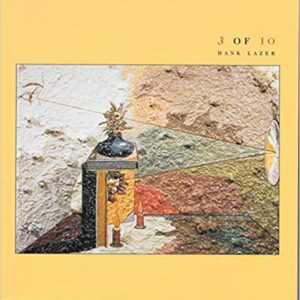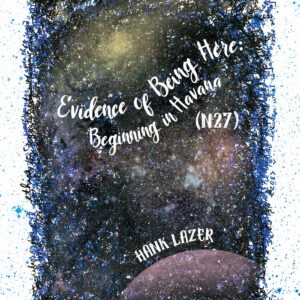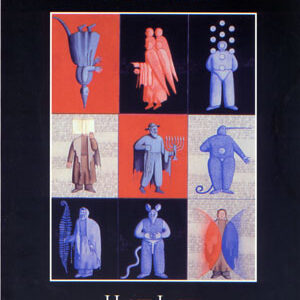Description
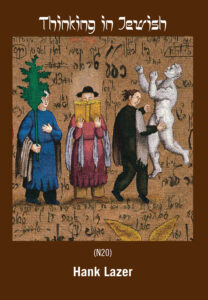
(Lavender Ink, 2017)
From Lazer’s ambitious ten-year Notebook shape-writing project, Thinking in Jewish challenges the way we read and write poetry and reframes the terms of spiritual autobiography. Drawing on Jewish traditions of text-and-commentary in conversation on the same page, Lazer’s new book, in dialogue with the writing of Emmanuel Levinas, is a notebook full of major events, some personal/familial in nature, others more generally so–from the death of his father-in-law to his first trip to Cuba, to other travels (London & Edinburgh, the former to read with one of his favorite poets, Fanny Howe), to time spent in LA and Honolulu, to a trip with his son who was beginning his graduate work in screenwriting at USC, to a reading of Adam Levine’s gigantic novel The Instructions, to a second trip to Havana in which the government (Cuban) applied pressure which caused Lazer to cancel a scheduled jazz-poetry concert, to the devastating tornado that struck Tuscaloosa killing more than fifty people and destroying large parts of the city and the surrounding countryside.
“Thinking in Jewish (N20) is indeed a dense and difficult book, but what important book is after all not a challenge, a true Kabbalistic challenge, commanding us to disentangle difficulty, to deal with density and complexity, variability in unity, as Hank Lazer’s N20does? It is precise, all encompassing, emotionally intellectual, and forged in a state of continuous spirituality: and in its precision and risk of expression and vision a book that conveys the true presence of the poet. Hank Lazer the poet (as far as I am concerned, and within the limits of my own knowledge and capabilities) is one of the best.”
–José Kozer, recipient of the Pablo Neruda Poetry Prize 2013
““decanter sings,” the words flow out on paper, the graphic jellyfish silently calls to prayer, the eye touches the hand that writes, the sneakiest hebrew “shin,” a vessel, bears across the sea of white paper the reminder that “no one is identical to himself.” this poetry is a craft that unbinds us, invites us to share that “note/book/magic/notebook.” thank you.’
–Jonathan Boyarin, Director of Jewish Studies at Cornell University & author of Thinking in Jewish
 “Are these poems? How to read them, up, down, sideways, spinning the pages, squinting the eyes or maybe drawing back to gawk at the complex lovely organic hand made shapes, words blurred? Or, what are poems, what is writing, what is reading, thinking, philosophy, living, dying, anyway? Such are the problems, questions, and joys of Thinking in Jewish, the latest publication in Hank Lazer’s truly astonishing experiment in what he calls “shape writing.” It would not surprise me if decades from now contemplatives are using this text for spiritual exercise. It is that wondrously open-ended and inexhaustible.”
“Are these poems? How to read them, up, down, sideways, spinning the pages, squinting the eyes or maybe drawing back to gawk at the complex lovely organic hand made shapes, words blurred? Or, what are poems, what is writing, what is reading, thinking, philosophy, living, dying, anyway? Such are the problems, questions, and joys of Thinking in Jewish, the latest publication in Hank Lazer’s truly astonishing experiment in what he calls “shape writing.” It would not surprise me if decades from now contemplatives are using this text for spiritual exercise. It is that wondrously open-ended and inexhaustible.”
–Norman Fischer, poet, zen priest, author of any would be if and escape this crazy life of tears
“These words move like water. Emblems impressed fluidly between hand and eye. This book is a visual incantation—between writing and drawing, between meditation and dream, between aliveness and loss. In this delicate luminous work, “each word is a transit transitory door.” Nothingness, ephemerality, and sinuous mandalas glow throughout. Enter the pages of these notebooks and you will find yourself entering an intimate contemplative expanse. Breath is inscribed here, like rivulets, paths which lead us into verdant yet invisible traces of interior life.”
–Laynie Browne, author of P R A C T I C E
“Hank Lazer is an astonishing triple threat. His work is vital to the futures of poetry, the visual arts, and the nature of art in general. No artist today better speaks to the radically dynamic hybrid of image and text he employs. Lazer uses the physical shape of language to still the world and magnify and sanctify its extraordinary linguistic, visual, and felt natures. His work provides the water of life and its shape also—and shape is the backbone of this ongoing process. Lazer’s technique is no mere artifice. Much like “lyrics” in space, Lazer establishes the vital bond between form and content toward which life and art aspire. While, like Walter Benjamin, historicizing his writing through abundant source notations, he also projects a sense of unrelentingly ceaseless force. “here I invite you to be here” draws Lazer in a circle near the end of his new book, N20, that is as it says, “without end.” Nearby he quotes Levinas saying, “like a preface to possible research.” Lazer’s work not only prefaces research and artistic achievement. He also enables and accomplishes it. Crucial to his practice is a gather[ing] in the word”—the gist or logos that clears and creates. The density of these mental, physical, and spiritual cues “upon the face of logos” form a play of vibrant and enveloping linguistic and pictorial fields. Lazer’s art plays between the rippling and interactive biblical “let there,” “be,” and “light” Lazer evokes.”
–Stephen Paul Miller, author of There’s Only One God and You’re Not It and co-editor of Radical Poetics and Secular Jewish Culture
“In Hank Lazer’s Thinking in Jewish, Levinasian theology dissolves into zen rumination, spun rumination transforms into startling configuration, and sparkling configuration abets looping thought. This is a practice of daily poetry as sublime flicker.”
–Charles Bernstein, author of Pitch of Poetry



